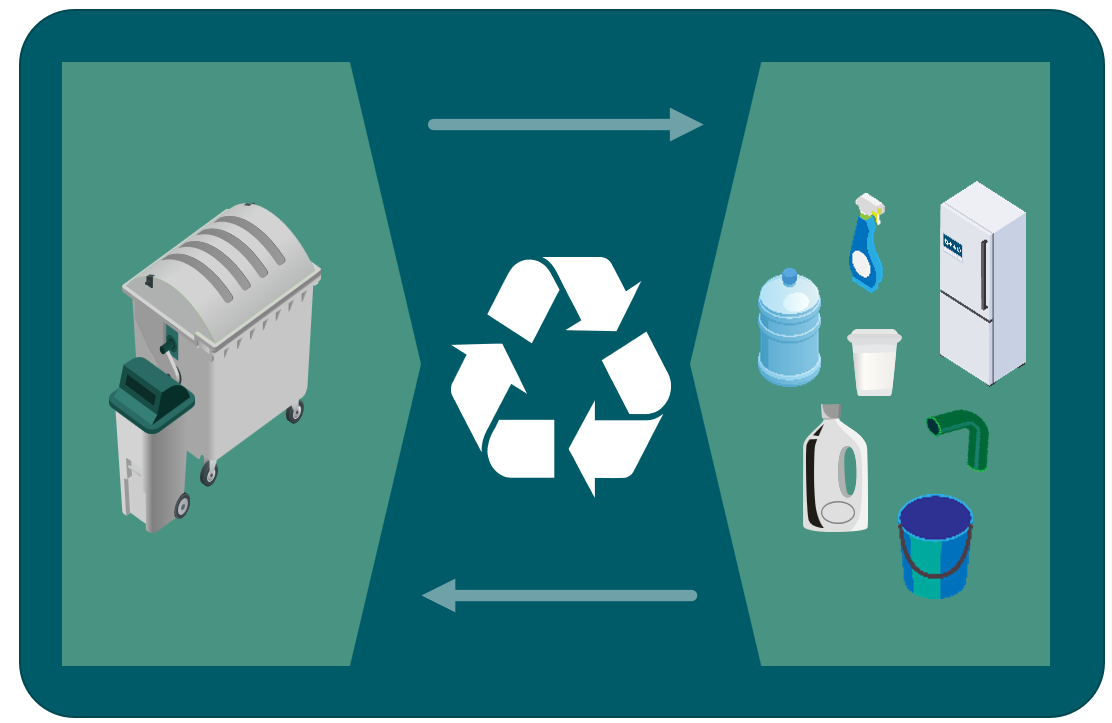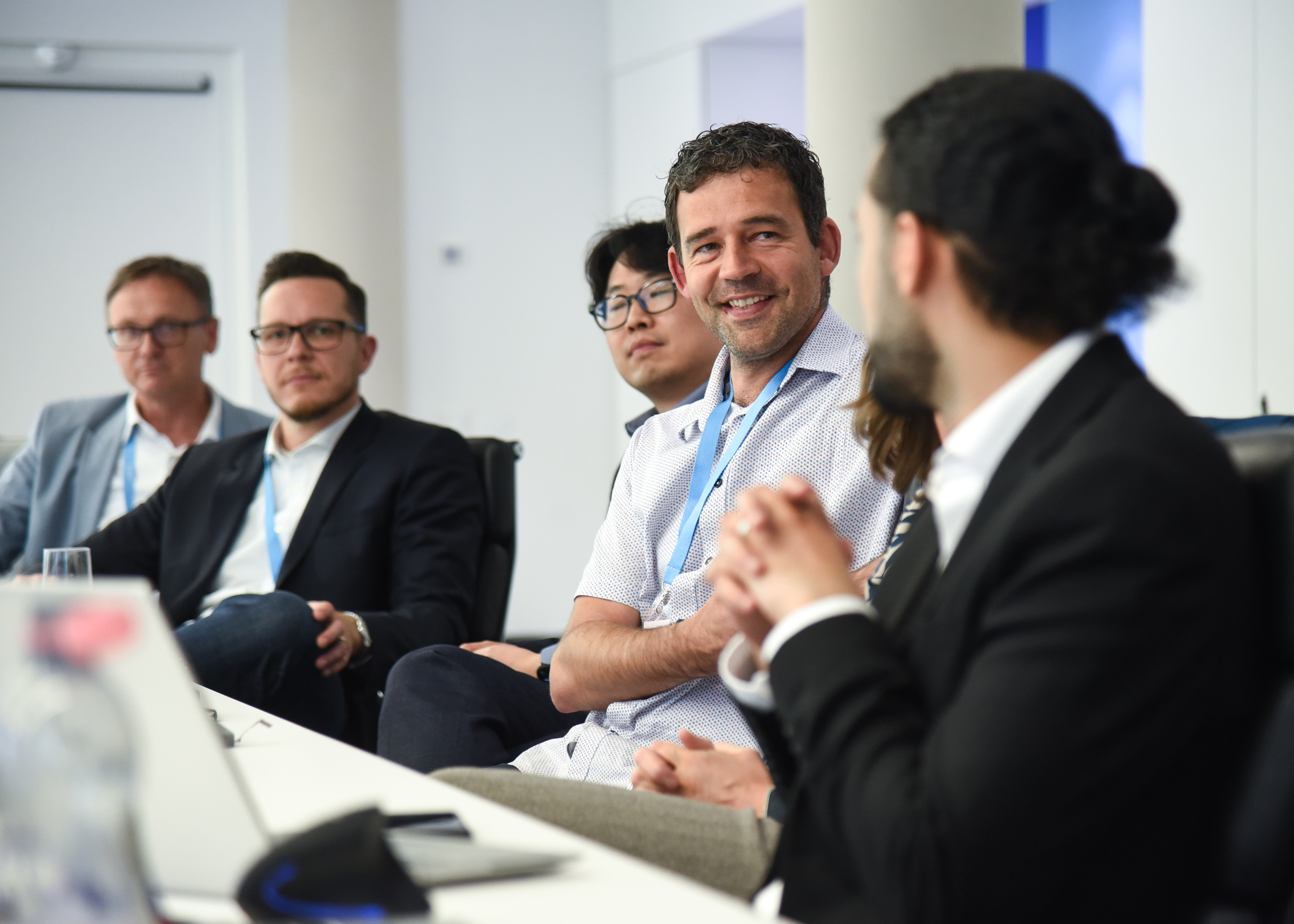Project Overview

Circular MSW Project Approach
- Phase 1: Define MSW volumes, waste composition and treatment in different regions, assessing 2 regional archetypes (with and without pre-sorting)
- Phase 2: Evaluate and prioritize recycling technologies along key criteria
- Phase 3: Assess optimal circular pathways (waste mgmt. to recycling) and trade-offs for MSW
- Phase 4: Help define, build and adjust the waste mgmt. set-up to enable MSW recycling
Project Objective:
Map, simplify, and pilot circular loops in the municipal solid waste (MSW) value chain by identifying the best recycling technologies and channelling waste into high-value circular products.
Why this matters:
Globally, over 2 billion tonnes of municipal solid waste (MSW) are generated each year, and at least 33% of it is not managed in an environmentally sound manner (World Bank, 2023). Yet buried within this waste is a largely untapped resource: carbon. Much of this carbon—currently lost to landfill or incineration—can be captured and converted into valuable circular feedstocks for the chemical industry, enabling a more sustainable and resource-efficient future.
This project brings together stakeholders across the value chain to increase the circularity of MSW by identifying high-potential waste streams, optimizing technology pathways, and enabling system-level change in waste management practices. By producing circular and renewable raw materials from MSW, the initiative aims to reduce landfill reliance, inform future investments in technology, and support the redesign of collection, sorting, and treatment systems. Finally, the project aims to build a pilot to validate the technical, economic, and environmental performance of selected pathways—demonstrating how MSW can be transformed from a burden into a building block for sustainable products.
Open call for innovators to join the project
We are looking for specialized innovators in municipal solid waste to provide expert inputs via interviews &/or workshop participation, in direct collaboration with the GIC and/or its selected project partners.
Complete Submission
All application forms must be filled out in full. Incomplete submissions will not be considered. Please ensure all required fields are accurately completed.
Alignment with GIC’s Mission
Applicants must demonstrate how their solution or approach aligns with the GIC mission and values and with the specific project requirements.
Originality & Integrity
All submissions must be original work. Plagiarism or misrepresentation will result in immediate disqualification.
Ready to Make an Impact?
Review Timeline: Applications are reviewed on a rolling basis. You will be notified of your status within 2–4 weeks.
Confidentiality: All application materials are treated with strict confidentiality.
Support: If you encounter any issues during the application process, please contact our support team at contact@wearegic.com .
Download the Terms & Conditions here.

Frequently Asked Questions
(click below to read each of the FAQs)
General information ->
What is the GIC Innovation Ecosystem and how does it work?
The GIC Innovation Ecosystem connects start-ups, research & technology organizations and universities together with Global Impact Coalition members to collaborate on projects to enable a net-zero chemicals future. Interested innovators can apply to contribute to our ongoing projects. The GIC will review applications to shortlist and select the most suitable contributors for each project.
How might the GIC Innovation Ecosystem evolve in the future?
We anticipate that our current offering will prove beneficial to both innovators and GIC member companies, enabling it to grow into an active and engaged community, where innovators can interact as members or partners and submit their own ideas.
Can I become a strategic partner to the GIC Innovation Ecosystem?
We plan to establish strategic partnership agreements in 2026 through a recurring annual partner fee.
Application process ->
Is there an application fee, and what does it cover?
There is a non-refundable application fee of 100 CHF to apply for one ongoing project currently open for calls. The fee covers the processing and screening of applications, as well as any necessary interactions with innovators during the application process.
How are applicants selected, and what criteria are used for evaluation?
Applicants are selected based on their alignment and scoring against criteria tailored for each project by the GIC project working group (e.g., relevant experience, research, or maturity in a specific technology).
Who can I contact for support or questions during the application process?
You can reach out to contact@wearegic.com for any support or inquiries.
Will there also be focused call-outs in the form of RfPs/RfQs?
The open calls listed on the website are not RfPs/RfQs. However, these may be issued to relevant innovators in the future as contributions are needed.
Projects ->
What is the TRL boundary within the GIC Innovation Ecosystem?
Ongoing GIC projects typically focus on technologies with a TRL of 6 or higher, although some early-stage projects may also consider technologies with lower TRLs. This approach remains flexible for both current and future GIC projects.
Can you provide examples of how innovators have been involved in GIC initiatives and projects in the past and the associated outcomes?
Over 50% of past and ongoing GIC projects have relied on or benefited from innovators in various ways. For example, we co-developed our R&D Hub for Plastic Waste Processing project with TNO who is now leading the Hub. For our direct conversion to C2+ project, we relied on ETH Zürich to conduct environmental impact and technoeconomic studies. For our automotive plastics recycling project, we brought in technology partners to execute the pilot. Projects generally last between 12 and 18 months before spinning off the GIC.
What are exit scenarios if ever becoming a key partner for a project?
Exit scenarios vary for each project on a case-by-case basis. Innovators who participate as project contributors will not necessarily become members of the project working groups or be eligible for exit scenarios.
Intellectual property ->
Who maintains the IP?
IP agreements and boundaries will be negotiated on a case-by-case basis for each project between the GIC and the involved innovator.
Contract & Legal questions ->
How are contract negotiations handled for each project?
The contract negotiation process will be managed smoothly and on a case-by-case basis by the GIC core team, with an expected short duration.
What if my organization already has a direct collaboration with one of the GIC members on a topic in a related area?
Your collaboration with the GIC will be considered separate and governed by a distinct agreement, independent of any existing commitments or contracts that innovators may have with GIC member companies.
